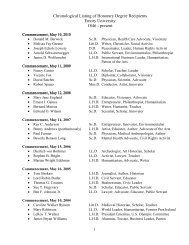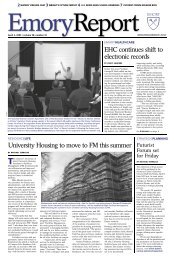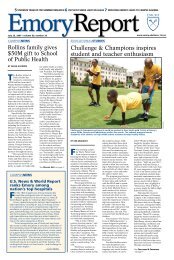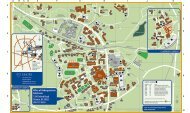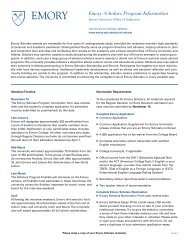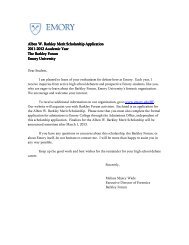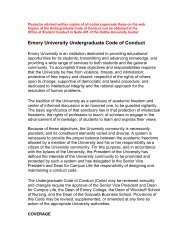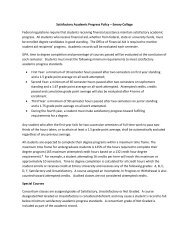DOSY Experiments - Emory University
DOSY Experiments - Emory University
DOSY Experiments - Emory University
Create successful ePaper yourself
Turn your PDF publications into a flip-book with our unique Google optimized e-Paper software.
4. Dpfgdste (Pulse Field Gradient Double STimulated Echo) is a variant of the<br />
DgcsteSL_cc sequence with no spin-lock and with a different phase cycle.<br />
Important sensitivity note: every pulse sequence with convection compensation contains an<br />
extra stimulated echo step and therefore has an inherent 50% signal attenuation with respect to<br />
its equivalent without convection compensation. If the experimental conditions exclude the<br />
possibility of convection then the non-compensated pulse sequences should be used as they can<br />
provide twice the signal-to-noise. This does not apply to the I-<strong>DOSY</strong> type experiments discussed<br />
in chapter 7.<br />
How can one find out whether convection is present in the NMR sample and, if yes, how serious<br />
its effect can be on the diffusion measurements? The most sensitive test can be provided by the<br />
NMR pulse sequence itself used to measure diffusion. It is easy to understand that complete<br />
convection compensation can only be achieved if the compensation block (orange box in Figure<br />
10) is applied exactly halfway trough the diffusion delay. Therefore if the block is shifted towards<br />
either the beginning or the end of the diffusion delay (i.e. time symmetry is broken) then signal<br />
attenuation and/or phase distortion will be obtained in the presence of convection while without<br />
convection the signal amplitudes and phases must stay unaffected. Each pulse sequence below<br />
has an auxiliary delay parameter (del2) allowing the operator to move the convection<br />
compensation block systematically along the diffusion delay and by doing so to record a so called<br />
“velocity profile”. This can be used either for qualitative (see Figure 11) or quantitative<br />
characterization of convection in diffusion experiments (for details see: N.M. Loening and J.<br />
Keeler, J. Magn. Reson. 139, 334-341 (1999).)<br />
No convection Convection<br />
a b<br />
del2 -45 0 +45 -22 0 +22 msec<br />
Figure 11 Velocity map (signal intensities as a function of the del2 delay) of a sample dissolved in D2O<br />
using the Dbppste_cc pulse sequence and identical gradient conditions (6 G/cm):<br />
a, temp = 25 °C (del = 120 ms, del2 varies from –45 to + 45 ms in 5 ms steps<br />
b, temp = 60 °C (del = 60 ms, del2 varies from –22 to + 22 ms in 2 ms steps)<br />
34






